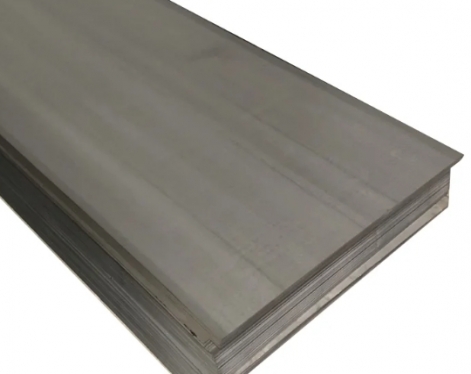The anti-corrosion method of anti-corrosion steel pipe is generally to use coating anti-corrosion. The following editor will show you the knowledge about coating anti-corrosion.
Coating anti-corrosion is to apply paint evenly and densely on the surface of the rust-removed metal pipe to isolate it from various corrosive media. It is one of the most basic methods for steel pipe anti-corrosion. The anti-corrosion coatings of steel pipes are increasingly using composite materials or composite structures. These materials and structures must have good dielectric properties, physical properties, stable chemical properties, and a wide range of temperature adaptation.
1. Outer wall anti-corrosion coating
Types and use conditions of the coating materials for the outer wall of the pipeline.
2. Inner wall anti-corrosion coating
In order to prevent corrosion in the tube, reduce frictional resistance, and increase the throughput, the film is applied to the inner wall of the tube. Commonly used coatings are amine cured epoxy resin and polyamide epoxy resin, and the thickness of the coating is 0.038 to 0.2 mm. In order to ensure a firm bond between the coating and the pipe wall, the inner wall of the pipe must be surface treated. Since the 1970s, there has been a tendency to use the same material for the inner and outer walls of the tube so that the inner and outer walls of the tube can be coated at the same time.
3. Anti-corrosion insulation coating
In order to reduce the heat dissipation of the pipeline to the soil on the medium and small diameter pipelines that transport crude oil or fuel oil, a thermal insulation and anti-corrosion composite layer is added to the outside of the pipeline. The commonly used thermal insulation material is rigid polyurethane foam, the applicable temperature is -185~95℃. This material has a soft texture. In order to improve its strength, a high-density polyethylene layer is added to the outside of the heat insulation layer to form a composite material structure to prevent groundwater from penetrating into the heat insulation layer.
4. If the outer protective pipe is a polyethylene pipe, there is no need to do anti-corrosion
Polyethylene is odorless, non-toxic, feels like wax, has excellent low temperature resistance (the lowest use temperature can reach -70~-100℃), has good chemical stability, and can withstand most acids and alkalis (not resistant to oxidizing properties) The acid) is insoluble in general solvents at room temperature and has low water absorption. However, because it is a linear molecule, it can slowly dissolve in some organic solvents without swelling and has excellent electrical insulation properties.
TIps:The ASTM A500 specification covers cold-formed welded and seamless carbon steel tubing in round, square, rectangular, and “special” shapes for welded, riveted, or bolted construction applications, as well as for general structural purposes.
Coating anti-corrosion is to apply paint evenly and densely on the surface of the rust-removed metal pipe to isolate it from various corrosive media. It is one of the most basic methods for steel pipe anti-corrosion. The anti-corrosion coatings of steel pipes are increasingly using composite materials or composite structures. These materials and structures must have good dielectric properties, physical properties, stable chemical properties, and a wide range of temperature adaptation.
1. Outer wall anti-corrosion coating
Types and use conditions of the coating materials for the outer wall of the pipeline.
2. Inner wall anti-corrosion coating
In order to prevent corrosion in the tube, reduce frictional resistance, and increase the throughput, the film is applied to the inner wall of the tube. Commonly used coatings are amine cured epoxy resin and polyamide epoxy resin, and the thickness of the coating is 0.038 to 0.2 mm. In order to ensure a firm bond between the coating and the pipe wall, the inner wall of the pipe must be surface treated. Since the 1970s, there has been a tendency to use the same material for the inner and outer walls of the tube so that the inner and outer walls of the tube can be coated at the same time.
3. Anti-corrosion insulation coating
In order to reduce the heat dissipation of the pipeline to the soil on the medium and small diameter pipelines that transport crude oil or fuel oil, a thermal insulation and anti-corrosion composite layer is added to the outside of the pipeline. The commonly used thermal insulation material is rigid polyurethane foam, the applicable temperature is -185~95℃. This material has a soft texture. In order to improve its strength, a high-density polyethylene layer is added to the outside of the heat insulation layer to form a composite material structure to prevent groundwater from penetrating into the heat insulation layer.
4. If the outer protective pipe is a polyethylene pipe, there is no need to do anti-corrosion
Polyethylene is odorless, non-toxic, feels like wax, has excellent low temperature resistance (the lowest use temperature can reach -70~-100℃), has good chemical stability, and can withstand most acids and alkalis (not resistant to oxidizing properties) The acid) is insoluble in general solvents at room temperature and has low water absorption. However, because it is a linear molecule, it can slowly dissolve in some organic solvents without swelling and has excellent electrical insulation properties.
TIps:The ASTM A500 specification covers cold-formed welded and seamless carbon steel tubing in round, square, rectangular, and “special” shapes for welded, riveted, or bolted construction applications, as well as for general structural purposes.









